What Size Sewing Machine Needle For Cotton: 2024 Full Guide
When it comes to sewing, choosing the right needle size for your fabric is crucial. Cotton is one of the most commonly used fabrics, so it’s important to know what size sewing machine needle for cotton is best.
In this article, we will cover everything you need to know about choosing the right size needle for your cotton fabric.
What is a Sewing Machine Needle?
Before we dive into the details of needle sizes, let’s talk about what a sewing machine needle actually is. A sewing machine needle is a thin, pointed tool that attaches to your sewing machine and punctures the fabric as it stitches.
The needle thread passes through the eye of the needle, and as the needle goes up and down, it creates stitches that hold the fabric together.
SEE Also: How to Change a Sewing Machine Needle
What Size Sewing Machine Needle for Cotton Is Best?
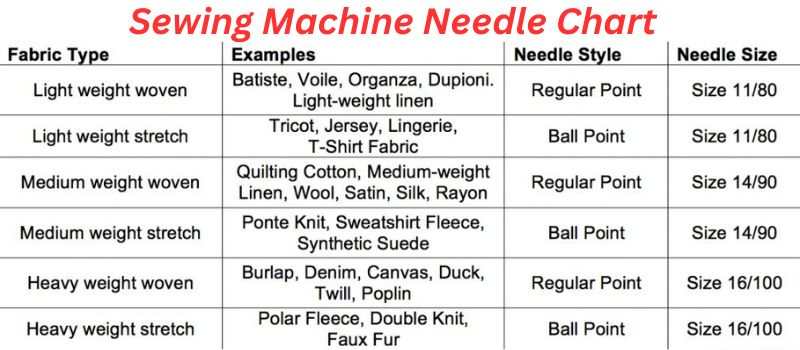
The best size needle to use for cotton fabric is typically a universal needle, size 80/12 or 90/14.
A universal needle is a good choice for cotton fabric because it is suitable for use on most types of woven fabrics, and it is not too fine or too heavy, which can cause damage to the fabric or the needle itself.
The 80/12 or 90/14 size needles are appropriate for medium-weight cotton fabrics such as quilting cotton, shirting, and denim.
If you are working with a lighter-weight cotton fabric, such as a voile or lawn, you may want to consider using a smaller size needle, such as a 70/10. Similarly, for heavier fabrics, you may consider using a larger size needle-like 90/14 or 100/16.
It’s also important to note that when using cotton fabric, you should make sure to use a new needle that is sharp, this will help prevent any damage to the fabric and also help to ensure that your stitching is even and smooth.
Also, it’s always a good idea to check your machine manual for recommended needles, there might be variations from manufacturer to manufacturer.
SEE Also: How to Wash Cotton Fabric before Sewing
Types of Cotton Fabric and the Needle Size Required?
There are many different types of cotton fabric, each with its own unique characteristics and uses. Some common types include:
- Muslin: A lightweight, plain-woven cotton fabric. It is often used for dressmaking, as well as for testing patterns and draping. Muslin typically requires a needle size of 8 or 9.
- Quilting Cotton: A medium-weight cotton fabric with a tight weave that is commonly used for quilting and other craft projects. It typically requires a needle size of 11 or 12.
- Canvas: A heavy-duty cotton fabric that is often used for things like upholstery, tents, and backpacks. Canvas typically requires a needle size of 14 or 16.
Denim: A sturdy cotton fabric with a characteristic diagonal twill weave that is typically used for jeans and other clothing items. Denim typically requires a needle size of 14 or 16. - Calico: A plain-woven cotton fabric that is often used for quilting and other craft projects. It typically requires a needle size of 11 or 12.
- Broadcloth: A closely woven cotton fabric that is smooth and has a slight sheen. It is often used for shirts, dresses, and other clothing items. Broadcloth typically requires a needle size of 11 or 12.
These are just a few examples of cotton fabrics, and the needle size required will also depend on the thickness of the fabric as well as the type of thread you are using.
It’s generally recommended to always use a needle specifically made for the type of fabric you are using and test it on a scrap piece of that fabric before starting on the project.
Also, it’s a good idea to use a universal needle as well, as they are designed to work well with a wide variety of fabrics and can help avoid needle breakage and other problems.
The Anatomy of a Sewing Machine Needle
To understand needle sizes, it’s important to know the different parts of a sewing machine needle.
A typical needle consists of the shank, the shaft, and the eye. The shank is the top part of the needle that sits in the needle holder of the sewing machine.
The shaft is the long, thin part of the needle that penetrates the fabric. The eye is the hole at the bottom of the needle where the thread passes through.
Needle Sizes for Cotton Fabric
When it comes to sewing cotton fabric, there are several different needle sizes to choose from. The size of the needle you choose depends on the weight of your fabric.
The higher the number, the larger the needle size. Here are some common needle sizes for cotton fabric:
- Size 70/10 – Use this needle for lightweight cotton fabrics such as batiste, voile, and organdy.
- Size 80/12 – This needle size is perfect for medium-weight cotton fabrics like quilting cotton, poplin, and shirting.
- Size 90/14 – Choose this needle size for heavier cotton fabrics such as canvas, denim, and twill.
- Size 100/16 – This needle size is ideal for heavyweight cotton fabrics like upholstery fabric and thick canvas.
- Size 110/18 – This needle size is the largest needle size and is suitable for very heavy cotton fabrics like heavy canvas or multiple layers of denim.
It’s important to choose the right needle size for your cotton fabric to ensure that your stitches are even and your fabric doesn’t get damaged.
How to Choose the Right Needle Size for Your Cotton Fabric
Choosing the right needle size for your cotton fabric is not as complicated as it may seem.
To select the right needle size, you should consider the weight of your fabric. If you’re unsure about the weight of your fabric, you can check the label or do a burn test.
Once you know the weight of your fabric, you can choose the appropriate needle size from the list above.
It’s also important to consider the type of sewing project you’re working on. For example, if you’re sewing a quilt, you may want to use a smaller needle size to create finer stitches.
On the other hand, if you’re making a heavy-duty bag, you may want to use a larger needle size to ensure that your stitches are strong and durable.
Read Also: How to Thread a Needle
What is a 90 14 Needle Used for?
A 90/14 needle is a sewing machine needle that is typically used for sewing medium-weight fabrics such as denim, chino, and twill.
The “90” refers to the needle’s thickness or diameter, which is considered a medium size, and the “14” refers to the length of the needle’s shaft.
This size is commonly used for sewing seams, hems, and other general sewing tasks on a wide variety of fabrics.
It’s also used for quilting and other types of needlework that require medium-weight fabrics.
But it’s important to note that needle size should be matched to the type and weight of the fabric you are using, as well as the type of thread and the sewing technique you are using.
What is an 80 11 Needle Used for?
An 80/11 needle is a type of sewing needle that is commonly used for medium-weight fabrics.
The number “80” refers to the size of the needle, with larger numbers indicating a larger needle, and the number “11” refers to the European standard for the thickness of the needle, with smaller numbers indicating a thinner needle.
80/11 needle is well-suited for fabrics such as cotton, linen, and denim, and can be used for a variety of sewing projects, including quilting, patchwork, home decor, and apparel construction.
These needles are typically used with a universal or denim needlepoint and are available in various types such as sharp, universal, stretch, and ballpoint.
They are also commonly used in domestic sewing machines and Industrial sewing machines.
What Size Sewing Machine Needle Is Used For Cotton?
When sewing with cotton fabric, it is generally recommended to use a universal or all-purpose sewing machine needle in size of 80/12 or 90/14.
These needle sizes are appropriate for the majority of cotton fabrics and will work well for both hand and machine sewing.
The 80/12 is the standard size for lightweight cotton fabrics and the 90/14 is a little larger size for medium-weight cotton fabric and it will easily pierce through the fabric.
The size of the needle you choose will depend on the weight and thickness of your cotton fabric. A thicker fabric will require a larger needle size.
Also, consider the thread you are using, you want to make sure the needle hole size is appropriate for the thread size.
A general rule of thumb is that, The thinner the fabric, the smaller the needle. So, if you’re working with lightweight cotton, you should use a smaller needle size (such as 60/8 or 70/10) and if you’re working with medium or heavy-weight cotton, you should use a larger needle size (such as 90/14 or 100/16).
How Does a Sewing Machine Needle Work?
A sewing machine needle is a slender, pointed rod made of metal that is inserted into the machine and is used to puncture the fabric and form stitches as the machine runs.
The needle is mounted on a shaft that is connected to the machine’s drive mechanism, which causes the needle to move up and down rapidly as the machine runs.
The needle has a sharp point at one end and a cylindrical shaft that tapers to a slightly larger “eye” at the other end.
The thread is passed through the eye of the needle, and as the needle moves up and down, it pierces the fabric and pushes the thread through, forming stitches.
The machine has a bobbin, which is a small spool of thread that is placed in the machine and is used as the lower thread in the sewing process.
As the needle pierces the fabric, it pulls the upper thread through the fabric and loops it around the bobbin thread, forming a lockstitch.
Different types of needles are available for different types of fabrics and thread. For example, there are needles with different-sized eyes and shafts for different thicknesses of thread, and there are also needles with different types of points, such as sharp points for general use, ballpoint needles for knit fabrics, and denim needles for heavy fabrics.
When the needle passes through the fabric, it creates a small hole. This hole will close when the thread is pulled through it, creating a knit or loop.
The needle size and shape and the thread size and type used will determine the size and look of this knit or loop.
Also, the size of the needle will affect the stability and strength of the stitches, with larger needles making larger loops and stitches, while smaller needles make smaller, more delicate loops and stitches.
Conclusion: What Size Sewing Machine Needle For Cotton
In conclusion, when it comes to choosing the right sewing machine needle for cotton, it’s crucial to keep in mind the fabric’s weight and the type of stitches you’ll be using. With a lighter fabric, go for a smaller needle, while heavier cotton demands a larger one. Don’t forget to match your needle to the thread for seamless stitching. So, whether you’re crafting a cozy quilt or a stylish summer dress, picking the right needle is your first step toward sewing success!
FAQs: What Size Sewing Machine Needle For Cotton
Can I use a Universal Needle for Cotton Fabric?
Yes, you can use a universal needle for cotton fabric, but it’s best to choose a needle size that’s appropriate for the weight of your fabric.
Can I use a smaller needle for cotton?
Yes, you could, but it’s like trying to fit into your younger sibling’s shoes a bit tight! Smaller needles, like 70/10, might work for lightweight cotton, but for most cotton fabrics, you’re better off with the 80/12 or 90/14 sizes. They’ll give you the freedom to sew without any hitches.
What happens if I use a larger needle on cotton?
Using a larger needle on cotton is like putting on oversized sunglasses it might work, but it won’t be comfortable. A bigger needle, say 100/16, can leave behind visible holes and might even damage the fabric. Stick with the 80/12 or 90/14, and you’ll be golden.
Are there any specific needles for different types of cotton?
Yes! Cotton comes in all shapes and sizes, just like shoes. If you’re working with delicate cotton, like voile or batiste, go for a fine needle-like 70/10. But if you’re tackling heavyweight cotton, like denim or canvas, opt for a stronger 100/16 needle. It’s all about matching the needle to the fabric, like pairing wine with cheese.
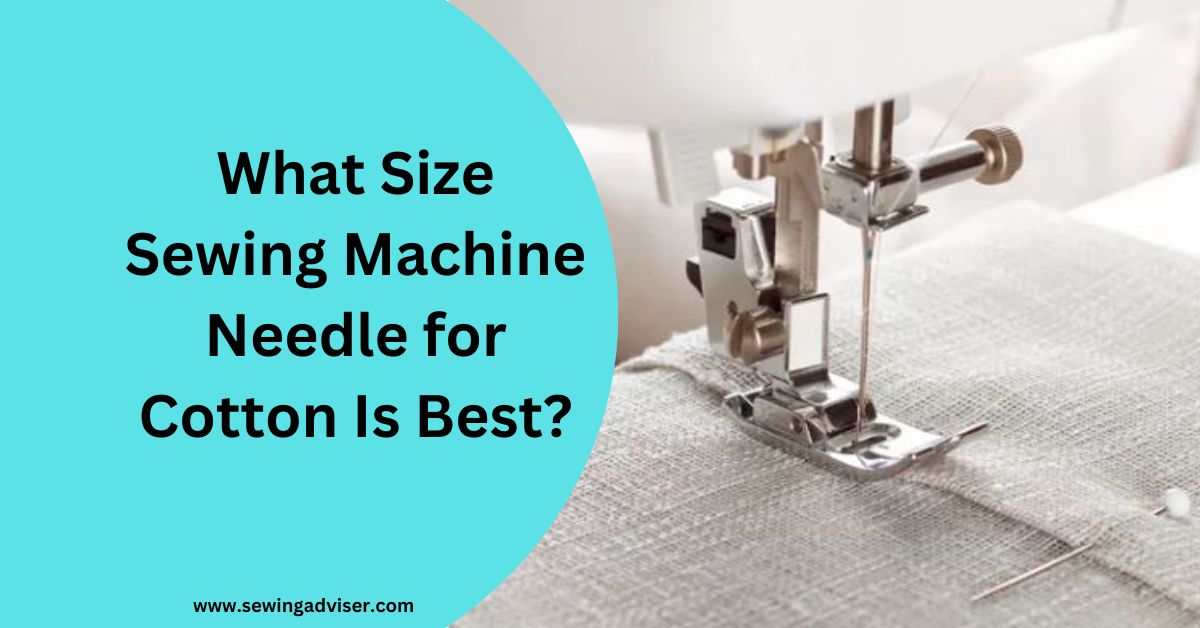
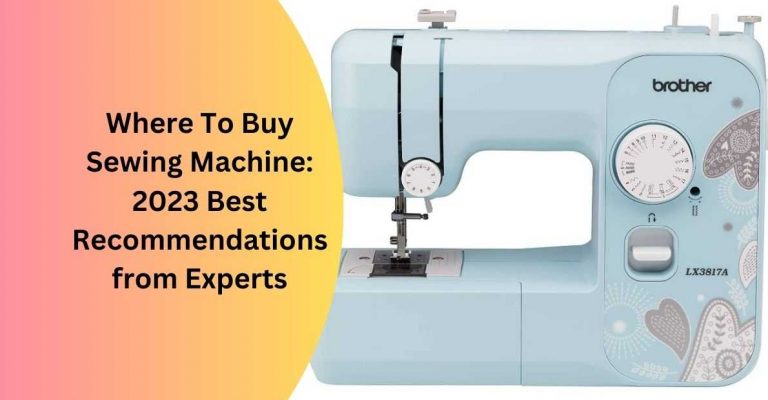
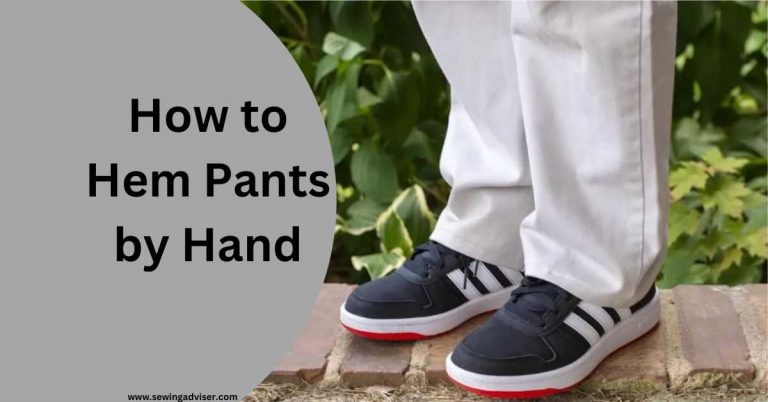
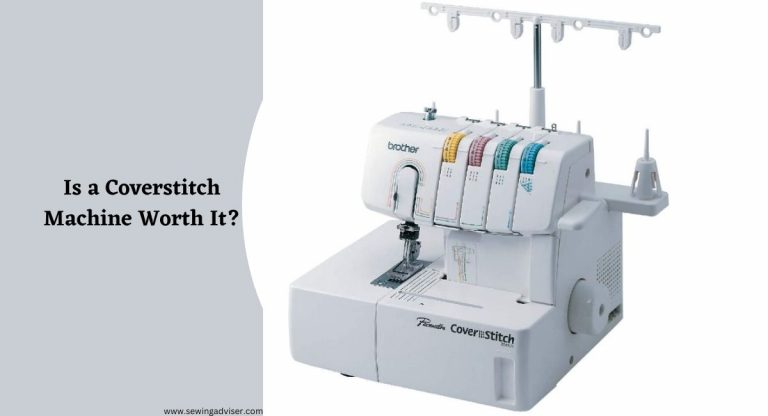
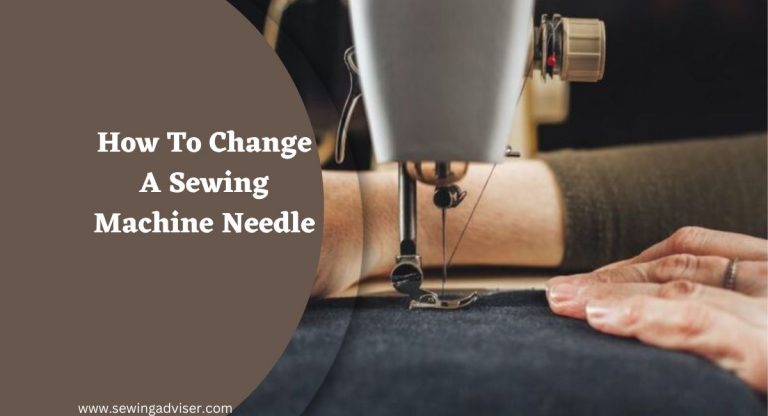
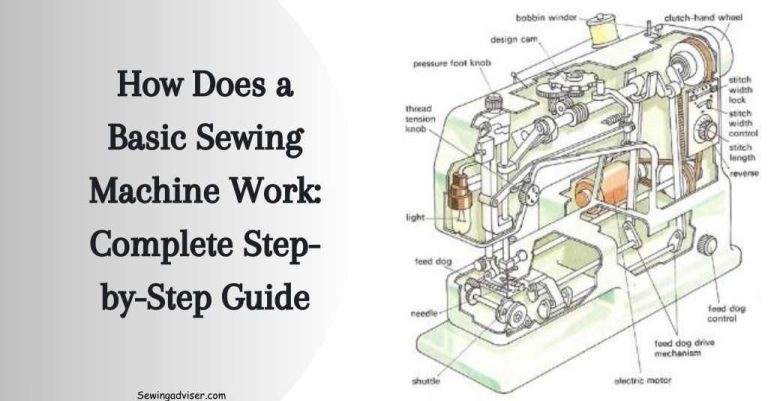

25 Comments